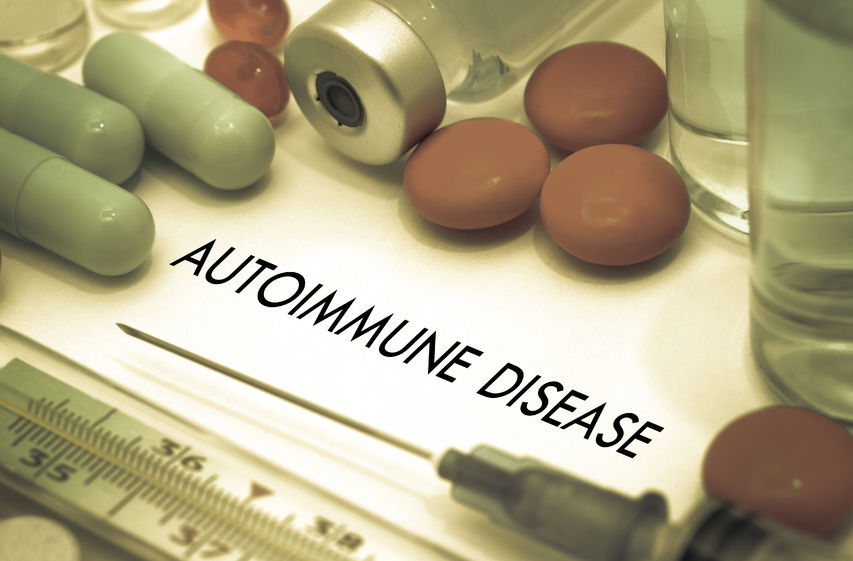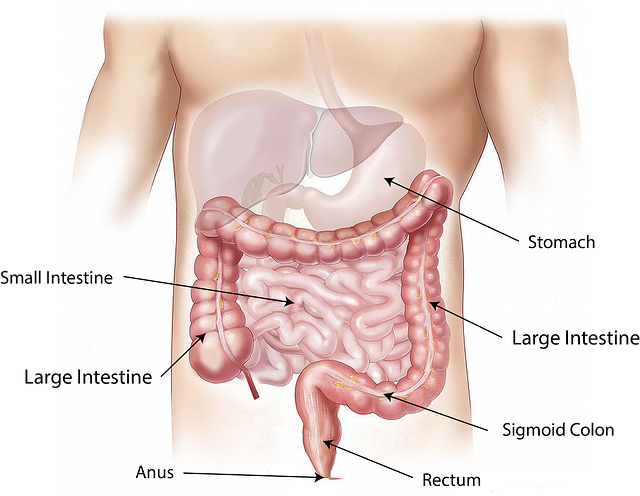My Experience With the Paleo Autoimmune Protocol
The paleo autoimmune protocol (AIP) consists of an autoimmune diet and other lifestyle interventions. It is intended for people who have a diagnosed autoimmune disease.
However, the AIP is essentially a gut-healing protocol because it recommends a nutrient-dense diet and the exclusion of all known and suspected gut irritants. Even the lifestyle interventions, such as better stress management and improved sleep, help heal the gut.
Thus, having an autoimmune disease is not required for embarking on this adventure in improving health. If your goal is healing leaky gut or other digestive issues, you might consider undertaking this approach.
Leaky gut is a key ingredient for the development of an autoimmune disease. Given that celiac disease is an autoimmune disease, you can assume you have leaky gut if you have this disease—unless you have already taken steps to fix it. Non-celiac disease gluten sensitivity is also associated with leaky gut.
Leaky gut is also referred to as “increased intestinal permeability” or “pathogenic intestinal permeability.”
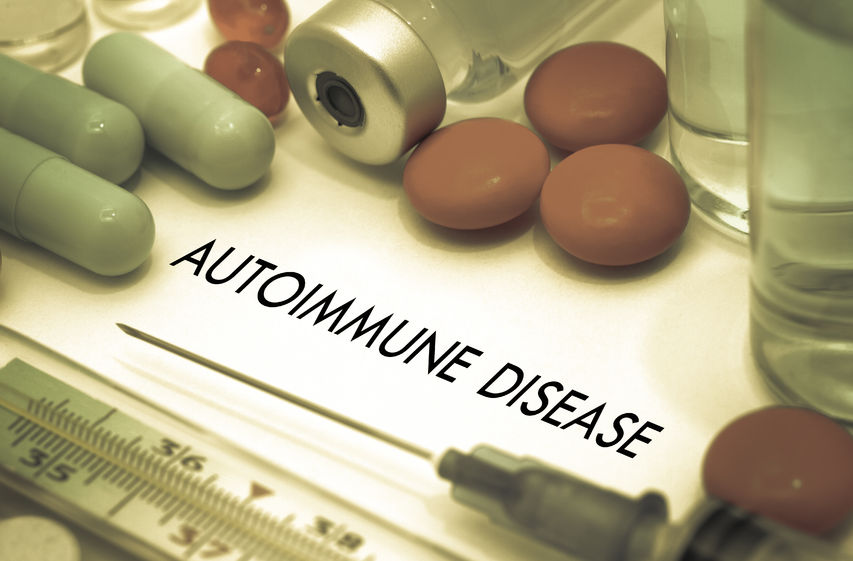 Conventional doctors typically recommend potent prescription medications for patients with an autoimmune disease. These medications only treat the symptoms and have potentially serious side effects. The paleo autoimmune protocol (AIP) is a natural approach to treating autoimmunity with the goal of achieving a state of remission (being symptom free, but not cured) without using such medications. However, complete remission is not always possible. Still, the AIP could potentially reduce the dosage of medication required to manage symptoms, thus reducing the risk of side effects. Note that celiac disease is an exception to this use of prescription medication. Instead, the gluten-free diet is recommended. However, for many celiacs, the gluten-free diet doesn't go far enough. They still need to heal their gut and balance their immune system.
Conventional doctors typically recommend potent prescription medications for patients with an autoimmune disease. These medications only treat the symptoms and have potentially serious side effects. The paleo autoimmune protocol (AIP) is a natural approach to treating autoimmunity with the goal of achieving a state of remission (being symptom free, but not cured) without using such medications. However, complete remission is not always possible. Still, the AIP could potentially reduce the dosage of medication required to manage symptoms, thus reducing the risk of side effects. Note that celiac disease is an exception to this use of prescription medication. Instead, the gluten-free diet is recommended. However, for many celiacs, the gluten-free diet doesn't go far enough. They still need to heal their gut and balance their immune system.Receive a free 50+ page guide with gut rebuilding recipes and tips from 45 wellness experts, courtesy of gut health expert Summer Bock. Also check out her Better Belly Project 2.0.
I started the paleo autoimmune protocol (AIP) in February 2014 to try to heal my remaining gut issues: leaky gut, early satiety, gut dysbiosis, and constipation.
(With early satiety, a feeling a fullness comes after eating a small amount of food or a smaller-than-usual meal.)
I had already resolved gastroesophageal reflux disease (GERD) and gastritis. I had finally eradicated the candida overgrowth that had plagued me for decades. That effort resolved many years of bloating, gas, abdominal pain, and a chronic vaginal yeast infection.
Using the AIP, I focused on the following:
- Identifying any unknown food sensitivities and eliminating those foods from my diet
- Consuming more nutrient-dense foods
- Adding lacto-fermented vegetables to my diet
- Applying recommended lifestyle practices
By following this autoimmune diet and the recommended lifestyle practices, along with other tools in my arsenal, I finally healed my leaky gut.
In this healing story, I focus on my experience with the AIP. For my story that discusses the other aspects of healing leaky gut, see Healing Leaky Gut: My Story About How I Finally Did It.
Did I Have an Autoimmune Disease When I Started the Paleo Autoimmune Protocol?
I can’t say I had an active autoimmune disease at the time I started the paleo autoimmune protocol (AIP). However, it’s possible I was in remission from two autoimmune diseases, Hashimoto’s and celiac disease.
My Hashimoto’s Diagnosis Came Many Years Before I Started the Paleo Autoimmune Protocol
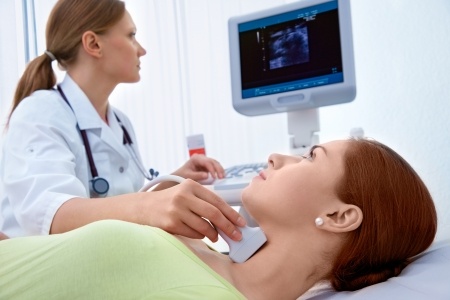 After viewing the results of my thyroid ultrasound, my endocrinologist said I have a “Hashi thyroid.” She explained that my thyroid has the appearance of a thyroid damaged by Hashimoto's disease. However, my thyroid is, thankfully, not currently inflamed. Hashimoto's is an autoimmune disease of the thyroid gland.
After viewing the results of my thyroid ultrasound, my endocrinologist said I have a “Hashi thyroid.” She explained that my thyroid has the appearance of a thyroid damaged by Hashimoto's disease. However, my thyroid is, thankfully, not currently inflamed. Hashimoto's is an autoimmune disease of the thyroid gland.In 1990, I was diagnosed with Hashimoto’s through a nuclear imaging test. However, my thyroid antibodies hadn’t been tested—yet. Sixteen years after my diagnosis, I went gluten free. Since then, these antibodies were tested three times. Each time, the results were negative.
However, after some people with the confirmed Hashimoto’s autoantibodies go gluten free, they experience a reduction in their thyroid antibodies or even complete remission of their autoimmune disease.
Similarly, this can happen in people with other autoimmune diseases but with the autoantibodies specific to their disease.
In fact, many autoimmune disease experts recommend that people with any autoimmune disease adopt the gluten-free lifestyle. In such people, gluten is likely to damage the gut lining and contribute to leaky gut.
Even though my thyroid antibodies are in the normal range, my thyroid is small due to inflammation, according to two endocrinologists who each performed an ultrasound of my thyroid.
In fact, one of them said I have a “Hashi thyroid,” meaning that my thyroid has the appearance of a thyroid that has been damaged by Hashimoto’s. However, she noted, my thyroid is not currently inflamed, just small from years of damage. Because of that, my body depends on the thyroid medication I take twice a day.
My hypothesis is that my Hashimoto’s is in remission, but my thyroid gland became significantly damaged after many years of this disease only being treated symptomatically with medication. No effort was made to find the root cause(s). Not one of the many doctors I've seen over the years recommended I adopt an autoimmune diet.
At the time, the concept of finding root causes for any medical condition was foreign to me. That concept is still foreign to many conventional doctors today. Fortunately, more enlightened healthcare practitioners and patients are well aware of this worthy goal, which can result in disease reversal or slowed disease progression.
But I Was Never Diagnosed With Celiac Disease
I went gluten free before being tested for celiac disease, but I have two copies of the HLA DQ2 celiac gene. Since going gluten free, I have undergone repeated testing for celiac disease, and the results have been negative.
According to a former gastroenterologist I saw who is an expert in celiac disease and non-celiac gluten sensitivity, those genetics put me at the highest possible risk for developing celiac disease. He suspected that by going gluten free, either I was in remission from this disease or I prevented it from developing.
Genes are not destiny (at least in the vast majority of cases), but I was clearly having a problem consuming wheat, starting in 2000. I believe I was moving toward developing celiac disease, but I stopped it in its tracks by giving up gluten.
An autoimmune disease doesn’t develop overnight. It can take up to 10 years or more for an emerging autoimmune process to achieve the full-blown status of an autoimmune disease.
But it’s also possible that I had asymptomatic celiac disease for some period of time before my digestive symptoms developed.
In any case, I’ll never know.
Identifying Any Unknown Food Sensitivities and Eliminating Them from My Diet Using the Paleo Autoimmune Protocol
A HUGE part of the paleo autoimmune protocol (AIP) is determining what one's food sensitivities are and eliminating them from the diet—at least temporarily. Hopefully, some can later be safely reintroduced after the gut heals.
When we eat foods we're sensitive to, we inflame our intestines. Inflamed intestines prevent healing leaky gut.
When I started this autoimmune diet, I already knew I was sensitive to the following foods and was avoiding them:
- The traditional gluten grains (wheat, barley, rye, and also spelt and other wheat relatives)
- Corn
- Oats
- Dairy (both cow and goat; haven't tried camel milk yet!)
- Soy
- Yeast
- Chocolate
- Coffee
- The artificial sweeteners Equal and Sweet & Low (if they can be considered foods...)
- Pecans
Yet, I had to consider the possibility that I was sensitive to additional foods, given my ongoing symptoms.
The Food Elimination Phase of the Paleo Autoimmune Protocol
 A soybean field near my home, the day before harvest. Soybeans and other legumes are removed during the food elimination phase of the paleo autoimmune protocol (AIP). Any attempt to reintroduce legumes to the diet should occur only if full remission of an autoimmune disease has been achieved. Even then, the legumes should be soaked and fermented.
A soybean field near my home, the day before harvest. Soybeans and other legumes are removed during the food elimination phase of the paleo autoimmune protocol (AIP). Any attempt to reintroduce legumes to the diet should occur only if full remission of an autoimmune disease has been achieved. Even then, the legumes should be soaked and fermented.With this autoimmune diet, some foods, like wheat and other gluten-containing grains, are intended to be eliminated permanently from the diet. The same goes for all other grains (except white rice) and pseudo grains like amaranth, quinoa, and buckwheat.
However, gluten-free grains and pseudo grains can potentially be reintroduced later (if they are soaked and sprouted). This is only recommended if full remission from an autoimmune disease has been achieved.
Processed foods, food additives, refined oils, refined sugars, and dried legumes (including soy) are also intended to be eliminated permanently. However, if soaked and sprouted, legumes can potentially be reintroduced.
The following foods and beverages are hopefully removed just temporarily during this autoimmune diet:
- Alcoholic beverages
- Coffee
- Dairy
- Eggs
- Fresh legumes (green beans and green peas)
- Nightshades and spices made from them (which include capsicum peppers, potatoes, tomatoes, eggplant, cayenne pepper, chili pepper, and paprika, among others)
- Nuts and nut-based oils
- Seeds (which include coffee, cocoa, and seed-based oils and spices)
These foods are potentially inflammatory and are removed from the diet for at least one month, but ideally longer. During this time, the immune system settles down after working in overdrive for probably a very long time.
The Food Reintroduction Phase of the Paleo Autoimmune Protocol
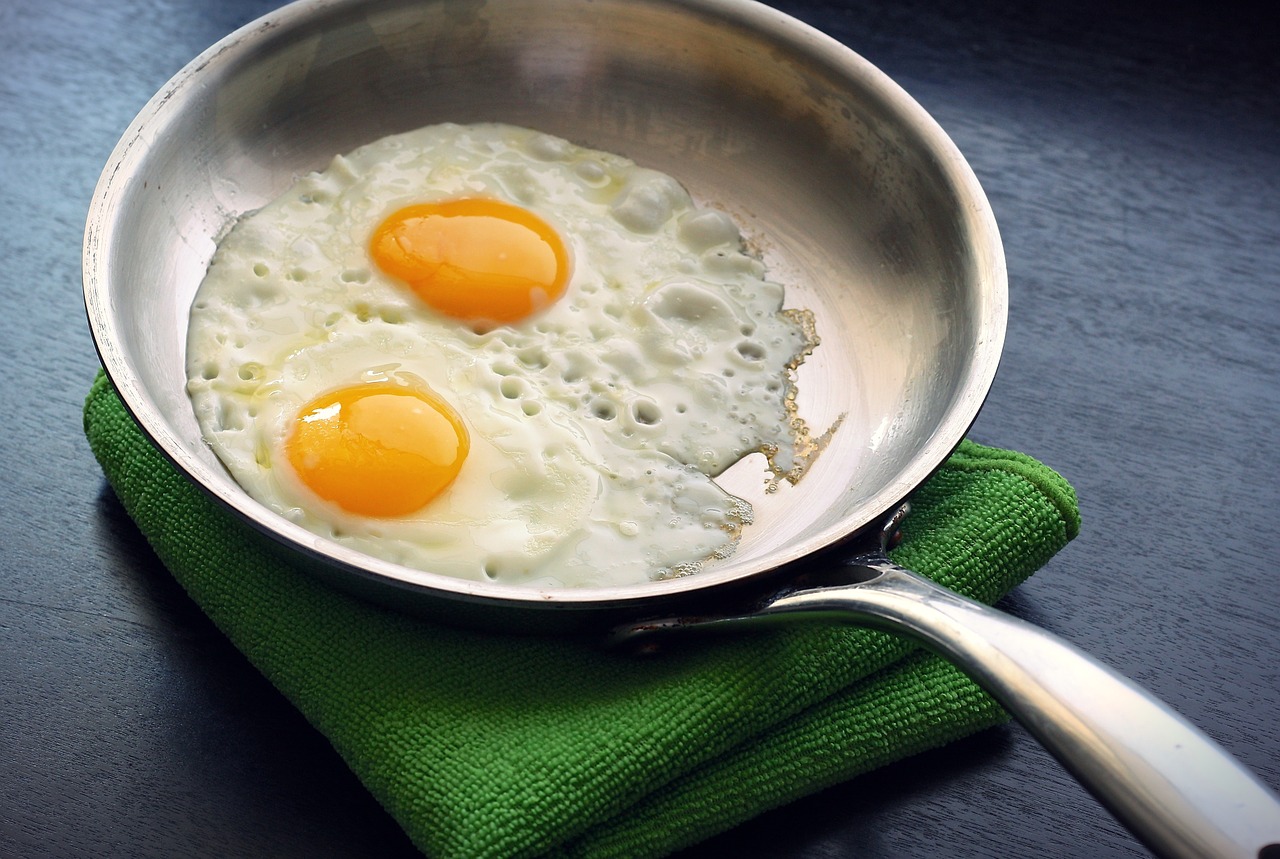 Eggs are a common food sensitivity. Unfortunately, healing leaky gut didn't bring eggs back to my table—at least not yet. I'll periodically attempt to reintroduce eggs back into my diet.
Eggs are a common food sensitivity. Unfortunately, healing leaky gut didn't bring eggs back to my table—at least not yet. I'll periodically attempt to reintroduce eggs back into my diet.During the reintroduction phase of this autoimmune diet, foods are slowly reintroduced, one at a time. Interestingly, if people on this diet attempt to reintroduce a food that their body still doesn’t like, their body might react more strongly than it did before they stopped eating it. In fact, they might not have noticed any reaction previously.
In my case, before attempting to reintroduce any foods, I waited many months—at least eight—so that my immune system had plenty of settle-down time.
Through this process of food elimination and reintroduction, I did identify some previously unknown sensitivities to the following:
- Eggs
- Walnuts
- Chili peppers
- Cayenne pepper
- Xanthan gum
Yep, I shouldn't have been consuming xanthan gum in the first place. It's a food additive and is meant to be eliminated indefinitely on this autoimmune diet.
I hadn’t consumed xanthan gum for many months because I had stopped eating the few processed foods still in my diet. For example, the brand of boxed coconut milk I stopped buying contains xanthan gum. As a replacement, I started using (BPA-free) canned coconut milk, which doesn't contain xanthan gum or any similar type of additive.
Then, at some point, I started using a liquid supplement that my chiropractor recommended. It contains xanthan gum, which I neglected to note when I agreed to purchase it and started using it. (And I consider myself a veteran ingredient label reader; no one's perfect!).
The xanthan gum gave me my first-time-ever symptom of excess mucus in my stool, which is one of the signs of gut inflammation.
As soon as I made the connection between that new supplement and my new symptom, I stopped taking it. My new symptom quickly resolved. It hasn't been back since.
My biggest surprise (and disappointment) during the reintroduction phase of this autoimmune diet was that I couldn't tolerate eggs. Previously, I had thought they were perfectly fine for me. Before starting the autoimmune diet, I ate them abundantly. I especially enjoyed my breakfast with two eggs fried in coconut oil, dried onions, and salt. But my body told me quite loudly they were off my table.
I have tried to reintroduce eggs a few times since then. Unfortunately, eggs cause major indigestion and heartburn and maybe even a gastritis flare. (Sometimes, it's hard to tell what's going on in there.)
I can tolerate small amounts of egg in my avocado mayonnaise, but the days of eating two fried eggs for breakfast appear to be over forever—not that I won’t periodically attempt to reintroduce them again.
Unfortunately, I haven’t been able to reintroduce as many foods as I would like back into my diet. Chocolate is still out, as well as all of the other original food sensitivities I listed.
I’ve safely reintroduced almond butter and almond flour, but I have trouble digesting whole almonds (I need to soak and sprout them, and see if that helps).
I’ve also safely reintroduced macadamia nuts, paprika, green beans, green peas, ground flax seed, sesame seeds (and tahini), ghee (clarified butter), and small amounts of alcohol every now and then.
Some foods I haven't yet tried to reintroduce (such as beans, green peppers, and some other nightshades).
I miss eggs and dark chocolate most of all.
Consuming More Nutrient-Dense Foods on the Paleo Autoimmune Protocol
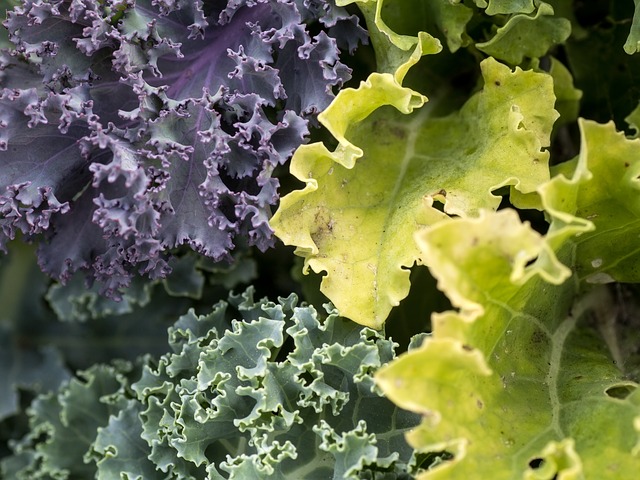 “Eat the rainbow” is common advice when it comes to eating a wide variety of vegetables and fruits. The means eat purple, green, yellow, orange, red, and white vegetables and fruits. Naturally, the paleo autoimmune protocol (AIP) recommends “eating the rainbow.”
“Eat the rainbow” is common advice when it comes to eating a wide variety of vegetables and fruits. The means eat purple, green, yellow, orange, red, and white vegetables and fruits. Naturally, the paleo autoimmune protocol (AIP) recommends “eating the rainbow.”Another major component of the paleo autoimmune protocol (AIP) is the recommendation to eat a wide variety of nutrient-dense foods. So I began eating a larger diversity (and more servings) of vegetables. I added vegetables such as beet greens, cabbage, kale, collard greens, pumpkin, and parsnips to my previously rather limited list of vegetables.
I also added more fish and shellfish to my diet, especially shrimp, scallops, sardines, and wild-caught salmon. As a snack, I added grass-fed beef sticks to my list of options.
And it look me a long while, but I finally started eating liver in the form of liver pâté made from grass-fed beef.
I also started consuming homemade bone broth made from organic chicken. Many people just make the bone broth and drink a cup a day, and also use the broth in recipes. I prefer consuming mine in the form of soup with lots of chicken, vegetables, herbs, and olive oil. In fact, this soup is my usual breakfast.
Bone broth, whether from chicken, beef, or some other source, is rich in minerals that support the immune system. Bone broth also contains healing goodies like collagen, glutamine, glycine, and proline. Most of all, the collagen helps heal the gut lining and reduces intestinal inflammation.
Simply put, bone broth is a must for healing leaky gut.
Healthy fats are also recommended on this autoimmune diet. I had already been consuming a lot of organic virgin, cold-pressed, unrefined coconut oil. However, before starting this diet, I sometimes consumed canola oil. To replace this highly refined vegetable oil, I incorporated more organic extra virgin, cold-pressed olive oil into my diet.
For a snack, I added spoonfuls of delicious coconut cream. It contains the coconut meat and is still high in fat.
I also started regularly eating avocado, which is high in monounsaturated fat. I eat half an avocado at a time and just scoop out the fruit (yes, technically, it's a fruit, although most people think of it as a vegetable).
Otherwise for fruit, I tend to eat apples, blueberries, cherries, and grapefruit. I could use more variety here, but I limit myself to one or two servings a day.
Adding Lacto-Fermented Vegetables to My Food Repertoire on the Paleo Autoimmune Protocol
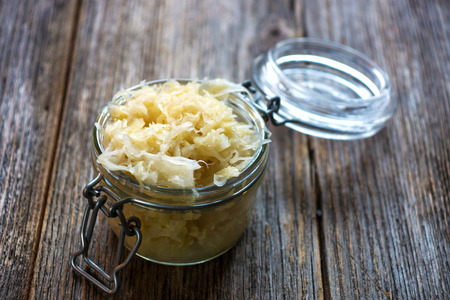 Homemade sauerkraut contains abundant lactobacilli bacteria. Pasteurized sauerkraut is typically found in grocery stores. The pasteurization process kills the beneficial bacteria.
Homemade sauerkraut contains abundant lactobacilli bacteria. Pasteurized sauerkraut is typically found in grocery stores. The pasteurization process kills the beneficial bacteria.As part of the paleo autoimmune protocol (AIP), I also started eating homemade lacto-fermented vegetables, which contain strains of lactobacilli bacteria. I personally believe ferments are more effective than most probiotic supplements, though I do both. So probiotics in food, beverage, and supplement form were (and still are) in my arsenal.
According to Sally Fallon in her book Nourishing Traditions:
The proliferation of lactobacilli in fermented vegetables enhances their digestibility and increases vitamin levels. These beneficial organisms produce numerous helpful enzymes as well as antibiotic and anti carcinogenic substances. Their main by-product, lactic acid, not only keeps vegetables and fruits in a state of perfect preservation but also promotes the growth of healthy flora throughout the intestine.
I regularly eat homemade sauerkraut but also consume a ferment with cauliflower, carrot, garlic, and dill. Another one I like contains carrot, ginger, and onion. The possibilities are endless.
A good place to learn about ferments and other probiotics is Donna Gates’ Body Ecology web site.
Note that the sauerkraut and pickles purchased in grocery stores have almost always been pasteurized, meaning that all the beneficial bacteria have been destroyed.
Applying the Paleo Autoimmune Protocol's Lifestyle Recommendations
 This man is scarfing down breakfast while standing and using his mobile phone and laptop. He is not eating mindfully. Sitting down at a table to eat and paying attention to his food would increase his enjoyment of food and support optimal digestion.
This man is scarfing down breakfast while standing and using his mobile phone and laptop. He is not eating mindfully. Sitting down at a table to eat and paying attention to his food would increase his enjoyment of food and support optimal digestion.When I started the paleo autoimmune protocol (AIP), I was already applying some of the recommended lifestyle practices.
For example, I learned mindful eating at a Yoga Journal conference when I was in my 40s. Mindful eating involves paying attention to your food as you eat, as well as thoroughly chewing your food before swallowing. These practices help your digestive system do its work. Typically, I'm the last person eating at the table, even though I usually eat the smallest quantity of food.
With this protocol, I learned another aspect of good “meal hygiene”: not eating while stressed. When I'm stressed, I'm in the fight-or-flight mode of operation. My body is preparing to kick and punch or flee, and its attention is taken away from digesting food.
Eating under such conditions is not healthy for anyone but especially for someone with digestive issues.
These days, if I'm upset and hungry, I wait to eat. I first settle myself down by meditating, stretching, doing the Emotional Freedom Technique (otherwise known as “tapping”), or some other calming activity.
That practice is about meal hygiene but also better stress management. Stress management is foundational in the AIP. I had already been doing stress-relieving activities to some extent, but I needed to do more.
For example, I've been a meditator since 1990 and a yogi since 1997. However, I tend to be emotional, and I sit too much, which is stressful to the body. I also tend to not schedule enough fun time into my life. As a person with a Type A personality, I typically think to myself: How can I be more productive? Not: How can I have more fun?
Changing these patterns means changing my personality. I'm working at better managing my emotions, being more active (beyond just exercising), and working more fun into my life. But it's an ongoing challenge and one I've not yet overcome.
Getting enough good sleep has also been a challenge for me. I've had insomnia, off and on (mostly on), since 2000. So it's not that I pack my schedule so full that I don't allow enough time for good sleep. It's that I wake up in the middle of the night and can't get back to sleep without taking medication. That medication does get me back to sleep, but it disrupts my sleep cycle, keeping me in the lighter stages of sleep.
At least I'm no longer requiring a middle-of-the-night snack due to hunger! But I'm continuing to troubleshoot this sleep issue, especially by focusing on strengthening my circadian rhythm.
I'm a work in progress, but living near the ocean in a relatively warm climate has increased my opportunities for more exercise, movement, and fun. I absolutely love riding the waves on my boogie board, especially when a wave takes me all the way to the shoreline. It's one of the most enjoyable activities I've ever engaged in.
Has the Paleo Autoimmune Protocol Healed All of My Digestive Complaints?
No, at least not yet. I'm evidently one of those slow paleo autoimmune protocol (AIP) healers, whereas some people heal very quickly.
However, my early satiety is better, especially in the morning. I take advantage of that and eat my largest meal at that time. My lunch is larger these days as well. Alas, the gut dysbiosis and constipation stubbornly remain.
Still, the fact that this protocol helped heal my leaky gut has definitely made this journey worth my while. A sealed and healed leaky gut means that I won’t develop another autoimmune disease. That’s priceless.
Unfortunately, after people develop one autoimmune disease, they are at increased risk of developing another. I have come across people who have up to four or five autoimmune diseases!
How Can You Learn More About the Paleo Autoimmune Protocol?
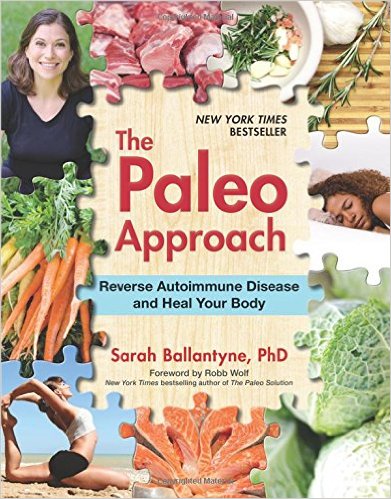 The bible for the paleo autoimmune protocol (AIP)
The bible for the paleo autoimmune protocol (AIP)In my opinion, Sarah Ballantyne, PhD, otherwise known as The Paleo Mom, is THE expert on the paleo autoimmune protocol (AIP). She has a lot of free content on her web site. Her site devotes content to the less restrictive paleo diet, as well as to this more restrictive protocol, which she refers to as “the paleo approach.”
The bible for this protocol is Sarah's book, The Paleo Approach: Reverse Autoimmune Disease and Heal Your Body. She also has two cookbooks:
- The Paleo Approach Cookbook: A Detailed Guide to Heal Your Body and Nourish Your Soul
- The Healing Kitchen: 175+ Quick & Easy Paleo Recipes to Help You Thrive (co-written with Alaena Haber)
Also check out Eileen Laird at the Phoenix Helix blog and the duo Mickey Trescott and Angie Alt at the Autoimmune-Paleo blog (with five autoimmune diseases between the two of them). These bloggers offer free resources for this protocol, including informative posts and podcasts, as well as books.
Mickey and Angie are health coach/nutritional therapy practitioners. They offer their services through The Paleo Mom.
CeliacFAQ.com home page > Healing Stories > My Experience With the Paleo Autoimmune Protocol
